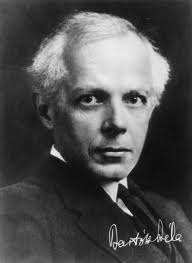|
Symphony
MYSTICAL PLANETS AND LIVELY GERSHWIN ORTIZ AT FINAL SRS CONCERT
by Peter Lert
Sunday, May 4, 2025
Symphony
VSO'S CONCERT MUSIC OF TIME, MUSIC OF PLACE
by Peter Lert
Sunday, April 27, 2025
Choral and Vocal
VOCAL ELEGANCE AND FIRE AT THE 222'S RECITAL APRIL 26
by Pamela Hicks Gailey
Saturday, April 26, 2025
CANTIAMO SONOMA SINGS AN INSPIRED GOOD FRIDAY MOZART REQUIEM CONCERT
by Pamela Hicks Gailey
Friday, April 18, 2025
DRAMATIC SHOSTAKOVICH SYMPHONY CLOSES PHILHARMONIC'S 25TH SEASON
by Terry McNeill
Sunday, April 13, 2025
LARGE COLLEGE OF MARIN AUDIENCE GREETS STOPHER ARTISTRY
by Terry McNeill
Saturday, April 5, 2025
Chamber
FRISSON DELIVERS SHIVERS OF DELIGHT
by Abby Wasserman
Sunday, March 30, 2025
OLD AND MOSTLY NEW IN SRS MARCH CONCERT IN WEILL
by Peter Lert
Saturday, March 22, 2025
Symphony
TWO FORMIDABLE SYMPHONIES AND PURPLE MOUNTAINS AT SRS CONCERT
by Peter Lert
Sunday, February 23, 2025
Chamber
THE PARKER CAPTURES DEMANDING ADES QUARTET AT RAC SEBASTOPOL CONCERT
by Peter Lert
Saturday, February 15, 2025
|
 |
 Composer Bela Bartok |
LATE-INNING HEROICS
by Steve Osborn
Sunday, October 12, 2014
Much like a home baseball team that scores the winning run in the bottom of the ninth, the Santa Rosa Symphony saved the best for last in its Sunday afternoon concert on Oct. 12. They led off with a tentative but ultimately captivating reading of Richard Strauss's "Till Eulenspiegel's Merry Pranks," followed with a solid but subdued performance of Beethoven's "Emperor" piano concerto, hit their stride with Wagner's "Tannhaüser" overture, and finally scored with Bartok's magnificent "Miraculous Mandarin."
That final work, written for a scandalous ballet, was easily the most riveting of the afternoon. Beginning with a propulsive opening in the second violins, the score is one long, tense buildup to a bloody and anguished climax. In the ballet, three criminals force a prostitute to lure customers in order to rob them. Their plans are thwarted by a mysterious mandarin who falls in love with the prostitute and repels their attacks.
Musically, this lurid plot induces restless energy and seething tension. The most prominent musical device is a sharply syncopated melodic line over a perpetually shifting drone. The violas played the first such line with powerful unison and great expression. They were followed by the cellos and then a series of bewitching solos from the clarinets and trombones.
The texture was wonderfully dense, with each section of the orchestra playing in a range of timbres. Conductor Bruno Ferrandis urged everyone forward at a feverish pitch, leading to a shattering ending and sustained applause. The only regret was that no dancers were on hand to enact Bartok's remarkable score.
The Bartok was a welcome and unexpected end to an afternoon of crowd favorites, beginning with Strauss's oft-performed tone poem. The playing here was precise but too deliberate to bring out the humor of the story, which revolves around Till's various pranks and his ultimate trip to the gallows. Ferrandis seemed a bit stiff in his gestures, a little too measured. A more relaxed approach might have induced more flexible playing and stronger dramatic contrasts.
By the march to the gallows, however, both Ferrandis and the orchestra had warmed up, and the playing was resplendent. The coda was magical.
Swift on the heels of Strauss came Beethoven's Emperor Piano Concerto (No. 5) with the Russian soloist Yevgeny Sudbin. He is a technically dazzling pianist in his thirties who is all business. His basic posture is to bend his head forward and hunch into the piano so that it occupies his entire field of vision. You would never know what he's playing based on his body language--he barely moves, except for his hands, which hang suspended in mid-air.
Sudbin uses lots of pedal but has an exceedingly delicate touch. His trills are rock-solid and expressive, a talent he used repeatedly throughout the concerto. Trills are so prominent in the Emperor that they become a method of sustaining notes, almost like bowing across a string or breathing into a horn.
The playing was faultless but ultimately somewhat timid. Sudbin didn't project as much as he could have, and his climactic moments were perfunctory, particularly at the end of the concerto where his final triumphant run up the keyboard seemed to peter out. Nonetheless, it was an accomplished performance, and it earned a standing ovation.
Ovations were also in order for the student musicians from the Symphony's top-tier youth orchestra who joined their elder colleagues after intermission to play Wagner's familiar overture to the opera “Tannhaüser.” The opening was magisterial and the mood triumphant, with Ferrandis conducting in sweeping gestures. This being Wagner, the horns were a central feature, but the strings also had their moments, particularly the violas, whose part was unusually prominent.
"Tannhaüser" is Wagner at his most commanding and assured. The players really leaned into their lines, and the resonant themes stood out in sharp relief. It was great theater, and it bodes well for the future that so many young musicians were able to join in.
|
